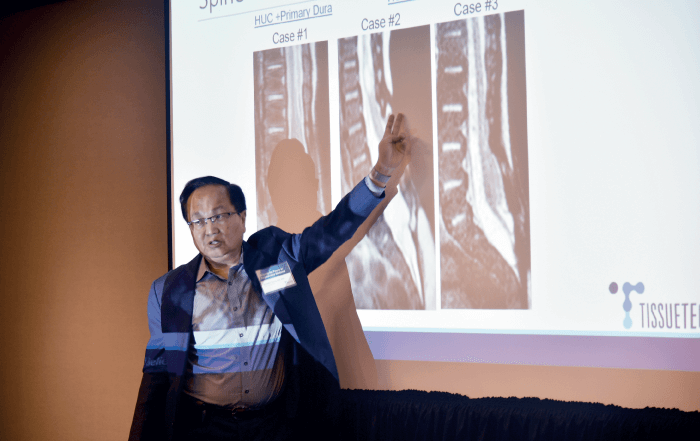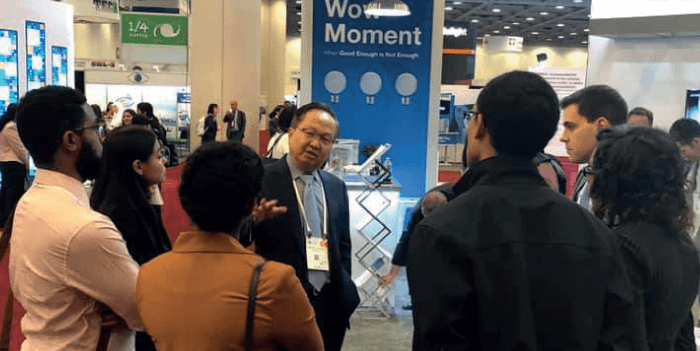
According to a study published in JAMA, racial and ethnic disparities in eye care are still prevalent in the USA (1). A higher proportion of blindness among minorities, an increased prevalence of glaucoma in African American and Hispanic patients, and a decrease in the number of minorities who have undergone necessary ophthalmic surgery all point to the need to eradicate these disparities. Furthermore, women and other minority groups remain underrepresented in the ophthalmic workforce despite an available pool of medical students (1).
We talk to Scheffer C.G. Tseng, Co-founder and Chief Technology Officer of Bio-Tissue, and its parent company TissueTech, to learn more about what can be done to meet the needs of underrepresented minorities in medicine, and how Tseng is helping to address these disparities. His idea? To establish the Minority Ophthalmology Mentoring program, in partnership with the American Association of Ophthalmologists (AAO) and the Association of University Professors of Ophthalmology (AUPO).
Tseng became involved with the Minority Ophthalmology Mentoring program during AAO’s 2019 annual meeting, when he was asked to meet with minority medical students and discuss opportunities in ophthalmology with them. “Increasing diversity in medical training may expose physicians-in-training to a wider range of different perspectives and afford them the opportunity to develop interpersonal skills that can result in higher levels of patient trust and satisfaction,” says Tseng. “I applaud the American Association of Ophthalmologists and the Association of University Professors of Ophthalmology for working together to address health disparities through this program.”
The primary goal of the program is to increase diversity in the field of ophthalmology and encourage minority medical students – those who identify as Black or African American, Hispanic or Latino, and/or Native American – to become competitive ophthalmology residency applicants. Research has shown that access to care improves when the physician community reflects the population at large. Although underrepresented minority groups comprise 30.7 percent of the US population, they only make up 6 percent of practicing ophthalmologists (1).
These programs focus on increasing diversity and implementing change. By increasing diversity, young physicians are exposed to a wider range of different perspectives to develop interpersonal skills that can result in higher levels of patient trust and satisfaction. Programs also focus on implementing change within the healthcare education pipeline to bridge the gap between the racial/ethnic mix of URM healthcare professionals and the racial/ethnic mix of people who need healthcare services.
These programs are critical to improving diversity and decreasing disparities in access to healthcare. They also benefit patients – URMs often speak the language of underrepresented minority patients and relate to them on multiple levels. Additionally, prior research has shown that patient-physician concordance of race, language, and social characteristics strengthen the patient-physician relationship to facilitate higher levels of trust and satisfaction during the patient’s office visit (2).

In addition to increasing diversity and implementing change, more attention needs to be paid to ophthalmology-specific barriers faced by minority residents. In a survey conducted by AAO, researchers learned that insufficient interest, lack of exposure, and the field being “too specialized” were the main reasons why students, regardless of “underrepresented in medicine” status, did not pursue ophthalmology. These factors all need to be taken into consideration if we are going to succeed in growing the pipeline of future minority ophthalmologists and physicians (3).
Diversity is one of the factors that drew me to Miami, where I served as a Chair Professor at Bascom Palmer Eye Institute, University of Miami Miller School of Medicine before starting Bio-Tissue in 1997.
I am deeply proud of the fact that Bio-Tissue has been awarded the Greater Miami Chamber of Commerce Minority-Owned Business of the Year. We afford minority professionals with a unique opportunity to be on the cutting edge of regenerative medicine with our amniotic membrane and umbilical cord human birth tissue products for ocular surface disease. We will continue to encourage diversity in the workplace and supporting future AAO mentorship initiatives.
One example of underrepresented minority mentoring is that of the provision of grants to educational institutions and employers to support any number of partnership opportunities, including:
- Workshops and conferences that expose URM students to URM health professionals to learn about healthcare careers and requirements for admission to training programs and licensure.
- Summer enrichment programs at health specialty schools to further help URM undergraduates prepare for admissions to graduate-level educational institutions interact with other URM students and faculty.
- Mentorship opportunities between minority faculty members and URM undergraduates during the academic year.
- Paid internships for undergraduate students to work in the healthcare sector as patient navigators, health coaches, or other positions in healthcare organizations.
The Minority Ophthalmology Mentoring Program is seeking URM students in their first or second year of medical school or pre-medical students planning to enter medical school. Find more information and apply online: www.aao.org/minority-mentoring.
References
- IM Xierali et al., “Current and Future Status of Diversity in Ophthalmologist Workforce”, JAMA Ophthalmol., 134, 9 (2016). PMID: 2741625.
- RL Thornton et al., “Patient-Physician Social Concordance, Medical Visit Communication and Patients’ Perceptions of Health Care Quality”, Patient Educ Couns, 85, e201 (2011). PMID: 21840150.
- AW Scott et al., “Evaluation of Medical Students’ Perception of an Ophthalmology Career”, American Association of Ophthalmologists. Available at: https://bit.ly/2R0mrWl.
